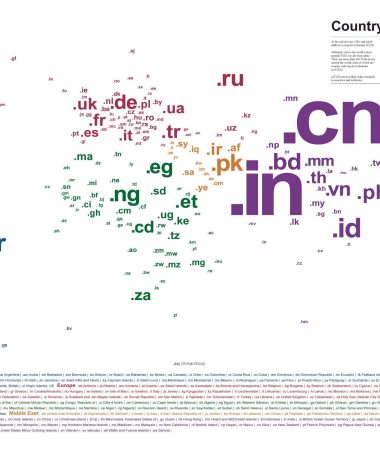When starting a website, one of the first and most crucial steps is registering a domain name.
The cost of a domain name varies widely depending on several factors, including the domain extension, the registrar, additional features, and whether it is a brand-new domain or a premium one.
Understanding these variables helps individuals and businesses make informed decisions about their online presence.
Factors That Affect Domain Name Pricing
The price of a domain name is influenced by multiple elements. The most basic factor is the domain extension, often referred to as a Top-Level Domain (TLD). Popular extensions such as .com, .net, and .org tend to have standard pricing, while niche or newer extensions like .tech, .ai, and .store can be more expensive.
Additionally, some country-code domains (ccTLDs) like .us, .uk, or .de have their own pricing structures depending on the registry policies in that country.
Another significant factor is the domain registrar you choose. Registrars are companies that sell domain names and provide management services. While the base prices for many domains are similar across registrars, additional fees for services like domain privacy protection, email forwarding, or website hosting can vary.
Additionally, the cost depends on whether the domain is a standard new registration or a premium domain. A standard domain is one that has not been registered before and is available at a regular price, while a premium domain is a name that has high commercial value and is either owned by someone else or sold at a higher price due to its desirability.
Average Costs of Registering a Domain Name
For a standard, non-premium domain, the price usually falls within a predictable range. The most common domain extension, .com, typically costs between $10 and $20 per year when purchased from a reputable registrar. Other standard extensions like .net, .org, and .info are often in the same price range, though some may be slightly more expensive.
More specialized domain extensions, such as .tech, .ai, .design, and .store, can range from $30 to $100 per year, depending on the demand and the registry that controls the extension. Certain country-code domains can be inexpensive or more costly, depending on the regulations of that specific country.
One hidden cost to consider is the renewal price. Many registrars offer attractive introductory pricing for the first year—sometimes as low as $1 or $5—but increase the renewal fee significantly. Always check the renewal cost before purchasing a domain to avoid unexpected price hikes in the future.
Premium Domains and Aftermarket Prices
Some domain names carry a much higher price tag due to their perceived value in the marketplace. These premium domains often consist of short, easy-to-remember words or popular keywords, making them attractive for branding and search engine optimization.
Premium domains can cost anywhere from a few hundred dollars to millions, depending on factors like length, keyword popularity, and demand. For example, domains like business.com, voice.com, or hotels.com have sold for millions of dollars due to their strong commercial appeal.
The aftermarket is another place where domains are sold at premium prices. Websites like Sedo, Afternic, and GoDaddy Auctions facilitate domain resales, allowing individuals or businesses to purchase domains from current owners. Prices in this market can be unpredictable, ranging from a few hundred to thousands of dollars.
Additional Costs Associated with Domain Ownership
Beyond the initial purchase, domain name ownership comes with additional expenses. Many registrars charge extra for domain privacy protection, which shields the owner’s personal information from public WHOIS databases. This service usually costs between $5 and $15 per year.
Some users also choose domain name forwarding, which redirects one domain to another website, a feature that often comes with an extra fee. Additionally, businesses or individuals who want to secure multiple domain extensions (e.g., example.com, example.net, example.org) will need to pay for each one separately.
If a domain name expires without being renewed, it may go into a redemption period, during which it can still be recovered—often for an expensive fee ranging from $70 to $200. If not renewed, the domain is eventually released back into the market, where it may be re-registered by someone else.
Finding the Best Deal on a Domain Name
To get the best price for a domain, it is essential to compare different registrars. Some of the most well-known registrars include GoDaddy, Namecheap, Google Domains, and Bluehost, each offering different pricing structures, promotions, and features.
It’s also wise to look for discounts and coupon codes, especially for first-time registrations. Some registrars offer bundle deals that include web hosting and email services, which can be cost-effective for new website owners.
For those interested in a premium domain, negotiating directly with the owner through domain marketplaces can sometimes lead to better deals. Some premium domains have a “make an offer” option instead of a fixed price, allowing buyers to negotiate.
The cost of a domain name varies significantly based on several factors, including the chosen extension, registrar pricing, and whether the domain is premium. While standard domain names are generally affordable, premium domains or aftermarket purchases can reach much higher prices.
Understanding the renewal fees, privacy protection costs, and potential additional charges is crucial before purchasing a domain. By researching different registrars, looking for promotions, and considering the long-term costs, individuals and businesses can secure a domain name that fits their budget and branding needs.








